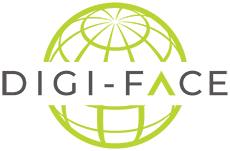Embracing the Intelligence Revolution
The recent DAAD-sponsored training of DAAD scholars at Chuka University, Kenya, held on 22-23 August 2024, had much to offer on Teaching and Learning with GenAI in Higher Education.
No doubt. We are facing a new era of an accelerated Knowledge Doubling Curve, thanks to the AI revolution. Gone is the time when knowledge used to double in years. Let’s spare a thought for the exciting era of Generative Artificial Intelligence (GenAI) and the alluring utopia of Artificial General Intelligence (AGI), not to mention how Quantum Information Science (QIS) will introduce a new revolution in processing big data for hitherto unimaginable breakthroughs in scientific endeavours.
Oral exams are poised to gain traction as an avenue for one-on-one confirmation if the written material shared by the learner matches the depth of content and awareness of the learner.
Overall, GenAI has bright prospects for enhancing delivery on the learning principles already covered under the DAAD-sponsored Digital Initiative for African Centres of Excellence (DIGI-FACE) and routine tasks for teachers, such as:
- Scaffolding and sequencing to address different learner needs and pace of learning with a graduated and just transition to advanced concepts;
- Orchestrated immersion using audio-visual aids;
- Personalised learning modules with due attention to Diversity, Equity and Inclusion (DEI);
- Course content creation; and
- Improving the quality of examinations, marking, and grading of student performance.
Key Points of Reflection
1. AI as a Frenemy in Higher Education
Artificial Intelligence is both a friend and a foe to teaching and learning. On the one hand, AI presents immense potential to revolutionise higher education, enhancing personalised learning and streamlining administrative tasks. On the other hand, it poses challenges that compel educators to rethink their traditional approaches. Faculty members, who may be slow to adopt new technologies, are now urged to embrace the intelligence revolution, as their students, often more technologically savvy, lead the way.
2. From the Industrial Revolution to the Intelligence Revolution
The 21st century marks the beginning of a significant shift from the Industrial Revolution to what is now being termed the Intelligence Revolution. This era will be defined by the rapid expansion and integration of AI in all aspects of life, including higher education. As AI becomes more entrenched, educators must acquire new skills and adapt to changing landscapes in learning and teaching.
3. AI Governance: Hallucinations and Energy Intensity
One of the key challenges of AI in higher education is its governance. AI models, such as those used in Natural Language Processing (NLP), are prone to generating “hallucinations”—misleading or inaccurate outputs that can be problematic in academic settings. Additionally, the energy consumption involved in training AI models is a growing concern, especially as sustainability becomes a critical goal in educational institutions.
4. Leveraging Reinforcement and Transfer Learning for Environmental Forecasting
Reinforcement learning and transfer learning hold great promise in forecasting and predicting complex environmental phenomena, which is increasingly important in academic research. These AI methodologies can enhance decision-making processes, enabling educators and researchers to simulate outcomes in climate science, ecology, and sustainability studies.
5. Challenges to Academic Integrity and Critical Thinking
AI’s impact on academic integrity is a significant concern. The ability of students to use AI tools to generate essays, projects, or answers without truly engaging in critical thinking poses ethical challenges. The role of educators is shifting from merely imparting knowledge to fostering higher-order thinking skills, ensuring that students maintain academic integrity and develop critical, creative thought processes. First Principles need a proper re-emphasis as teachers deliver content and discharge their quality control and quality assurance role to check against fake content and hallucinations.
6. Ethical Issues: Intellectual Property, Copyrights, and Equity
The rise of AI in higher education also brings about complex ethical issues related to intellectual property and copyrights. As AI systems create and curate content, the question of ownership arises. Furthermore, ensuring equity in access to AI tools, as well as promoting diversity and digital inclusion, remains a priority, particularly in less technologically advanced regions or among disadvantaged groups.
7. Surveillance Capitalism in Higher Education
As educational institutions adopt AI for administrative and academic purposes, concerns about surveillance capitalism become more pronounced. Data generated by students and faculty members may be harvested and monetised, leading to privacy concerns and ethical dilemmas regarding the use of personal information.
8. Labour Market Adaptiveness and the Shift in Values
AI is expected to reshape the labour market, with employers increasingly valuing the final product rather than the means used to achieve it. This may lead to a shift in traditional values, with less emphasis placed on the process of learning and a greater focus on outcomes. As a result, non-consequentialist values, which prioritise ethical means, may be diluted in favour of efficiency and productivity.
9. The Digital Divide: Widening Gaps in Access to AI Technologies
One of the most critical challenges posed by the increasing use of AI in higher education is the digital divide. This refers to the gap between those who have access to modern digital technologies, including AI tools, and those who do not. While AI promises to enhance learning experiences, it also risks exacerbating existing inequalities between students and institutions that have the resources to adopt these technologies and those that lack them. In many developing regions, inadequate infrastructure, poor internet connectivity, and limited access to devices create significant barriers to benefiting from AI-driven innovations.
Educators and policymakers must address this digital divide to ensure that AI does not become a tool that privileges the already advantaged while leaving behind students from marginalised communities. Institutions must focus on promoting digital inclusivity through improved infrastructure, providing access to affordable digital tools, and ensuring that students and staff are equipped with the necessary digital literacy skills.
10. The Skills Revolution: Preparing Educators for the Future
Educators are at the forefront of the skills revolution. To stay relevant in an AI-driven world, they must continuously upskill, reskill, and adapt to new technological advances. Institutions must invest in professional development programmes that equip teachers with the necessary AI literacy to stay ahead, rather than fall behind their students. Learner assessment must also change to reflect the new realities in an AI era. As such, oral exams are poised to gain traction as an avenue for one-on-one confirmation if the written material shared by the learner matches the depth of content and awareness of the learner.
Conclusion
The influence of Artificial Intelligence (AI) on higher education is profound, offering both opportunities and challenges. Early adopters are better positioned to replace the laggards and technophobic as lecturers in the AI era. As institutions navigate this intelligence revolution, the focus should be on governance, equity, ethical concerns, digital inclusion, and fostering critical thinking. The future of higher education will depend on how educators and institutions respond to these evolving dynamics, embracing AI’s potential while addressing its shortcomings. Oral one-on-one interviews are poised to gain relevance as a crucial layer for ascertaining if the written reports students submit match the depth of contents they can articulate and demonstrate during face-to-face engagements with lecturers.

You must be logged in to rate posts.



